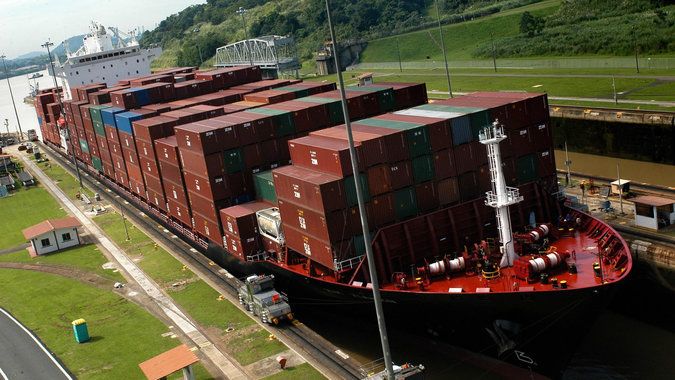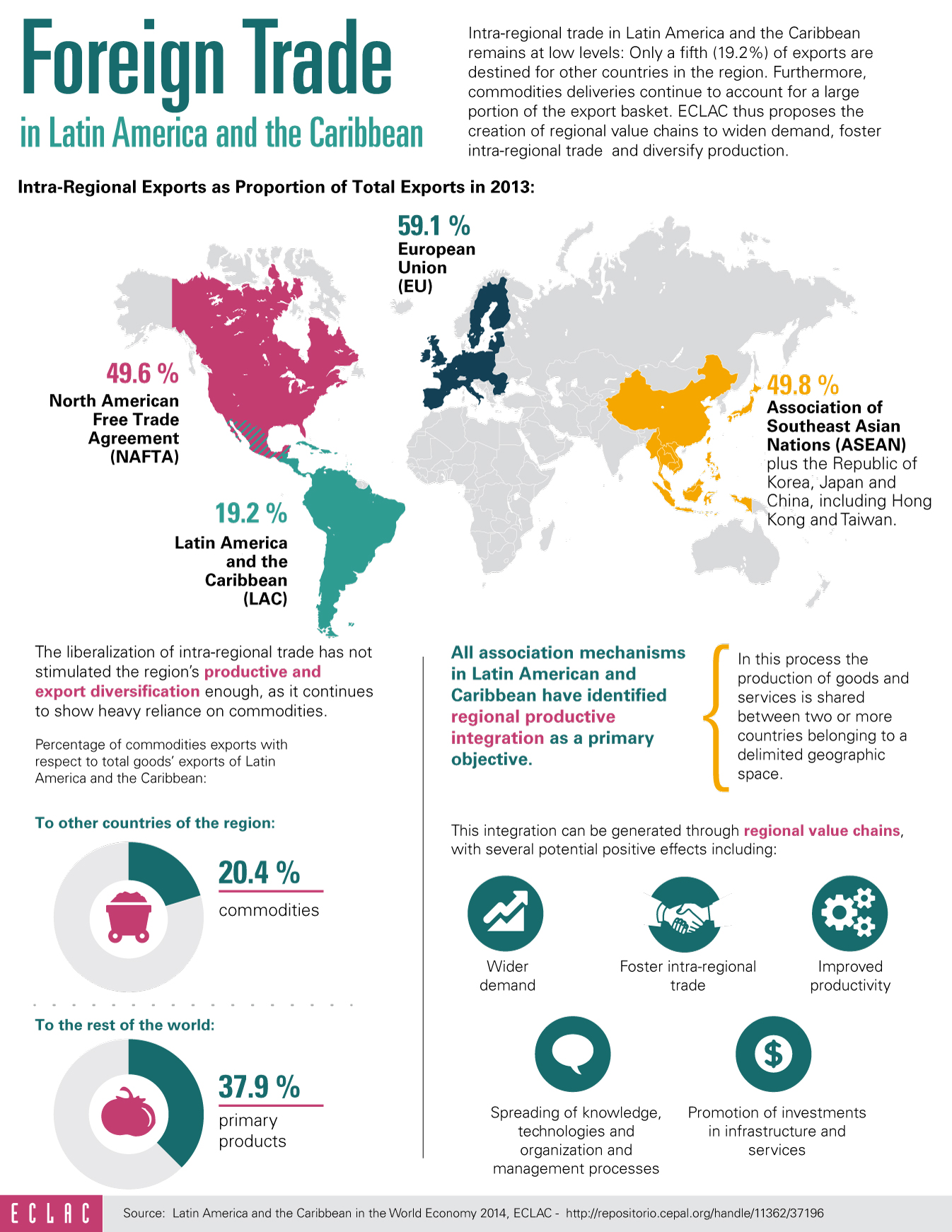The Pacific Alliance and MERCOSUR Represent More than 80% of Regional Foreign Trade
Work area(s)
A greater convergence between both blocs would encourage structural change in favor of equality, according to ECLAC.

(November 24, 2014) The Pacific Alliance (PA) and the Common Market of the South (MERCOSUR) combined represent more than 80% of regional foreign trade as well as population, and more than 90% of Gross Domestic Product (GDP) and direct foreign investment flows, according to a new report by the Economic Commission for Latin America and the Caribbean (ECLAC).
The Pacific Alliance and MERCOSUR. Towards Convergence in Diversity (Spanish only) was released today to the governments of the continent as a contribution to the seminar “Dialogue on Regional Integration: The Pacific Alliance and MERCOSUR,” which took place in Santiago, Chile, organized by the Chilean Ministry of Foreign Relations.
The report stresses that, between the two groups, their member states account for the seven biggest economies of Latin America and the Caribbean, according to GDP (in 2013, in descending order): Brazil, Mexico, Argentina, Colombia, Venezuela, Chile and Peru. The Pacific Alliance (PA) is composed of Chile, Colombia, Mexico and Peru, while MERCOSUR is formed by Argentina, Brazil, Paraguay, Uruguay and Venezuela.
In 2013, total trade between both groups of countries reached 47.4 billion dollars, with exports from PA to MERCOSUR of 23.7 billion dollars, a similar number to the deliveries from MERCOSUR to the Alliance, the document added.
Given the current exchange levels, ECLAC says that convergence between PA and MERCOSUR not only will bring benefits to their member states, but also will be an historic opportunity to move towards true regional integration.
“An integration process of regional features seems more appropiate as a sign of the times and the demands of structural change in favor of equality in Latin America. The gradual convergence between the Pacific Alliance and MERCOSUR could prove to be a decisive catalyst of that process,” Alicia Bárcena, ECLAC’s Executive Secretary, said at the study’s introduction.
Latin America and the Caribbean have shown a stagnant situation in terms of exports since the end of the nineties, considering that the region’s participation in global exports has fluctuated between 5% and the current 6%, despite the high prices registered by some of the commodities exported by the region during most of the last decade. In addition, the region has shown low incorporation in the knowledge-based economy, assigning just 0.84% on average of regional GDP between 2005 and 2012 to research and development (R&D), although expenditures in this area in most countries of the region (with the exception of Argentina and Brazil) was below 0.5% of GDP.
According to the United Nations organization, a final integration of all Latin American and Caribbean sub-regions should be the goal for the different groups and forums in the next years. Furthermore, concerted regional action would strengthen the region’s voice in the world’s principal debate arenas as well as relations with other key players in the international system.
In order to achieve that, ECLAC recommends a workplan for countries to foster regional integration focused on the following points: making trade easier, both intra-regional and with the rest of the world; people’s mobility; science, technology and prospective vision; sustainability; transportation; energy; industrial policy; and a joint approach to Asia-Pacific, among others.
The organization also proposes that integration schemes as well as business organizations—and especially trans-Latin companies—improve mutual dialogue to promote competitive regional and sub-regional value chains.
Related content

Foreign Trade in Latin America and the Caribbean
Intra-regional trade in Latin America and the Caribbean remains at low levels: Only a fifth (19.2%) of exports are destined for other countries in the region. Furthermore, commodities deliveries…
Country(ies)
- South America
- Latin America and the Caribbean
Contact
Public Information Unit
- prensa@cepal.org
- (56 2) 2210 2040
